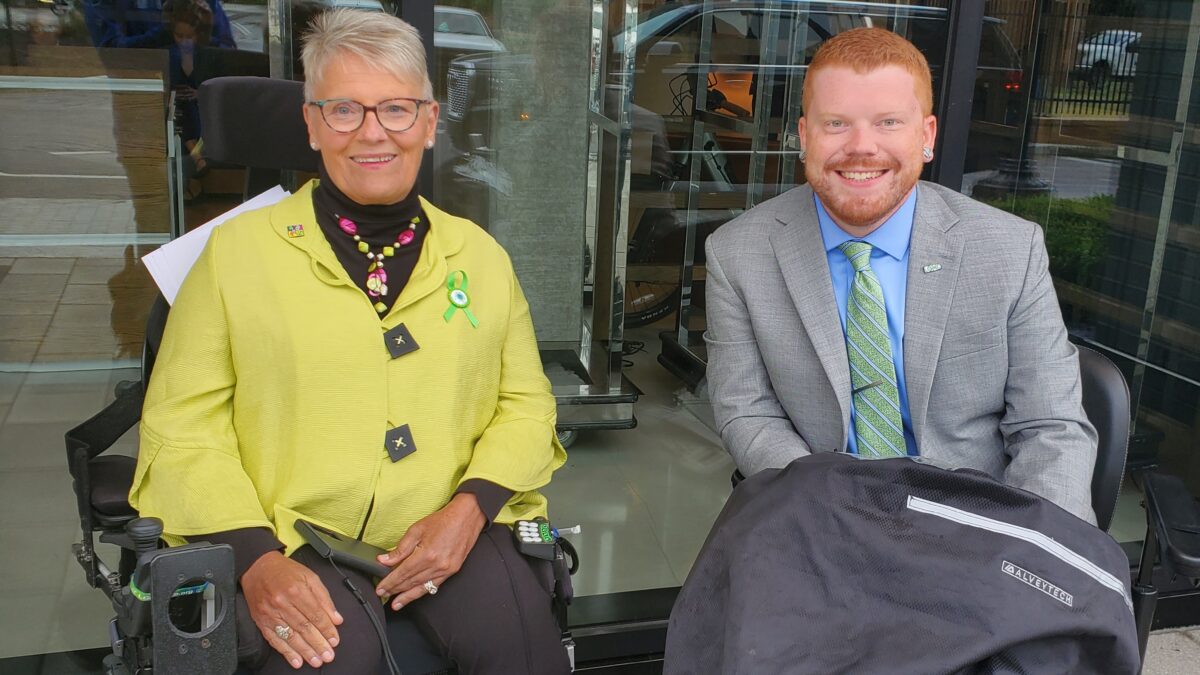This is a personal story from Johnny Faver, a member of the titin community who lives with a neuromuscular disorder that results from a disease-causing change in the TTN gene called Limb Girdle Muscular Dystrophy type 2J/R10 (LGMD2J/R10).
As we celebrate the 10th annual LGMD awareness day, September 30th, the patient community is reaching a fever pitch in our efforts to advocate and educate the world about LGMD. This year awareness month is particularly meaningful to me because of the LGMD Day on the Hill in Washington D.C. that occurred on September 18th. I jumped at the opportunity to join this effort. I felt like I could make a difference, and began imagining the many others who could not attend who we would be representing. I felt the pressure to make sure I made the best possible impact in my efforts on the hill so others would be well represented. Our goal was twofold; to serve as the voice for the LGMD community to make a huge impact on those living with this condition and to connect with other members of the community. Participating in this effort was an absolute honor, and teaming up with community advocacy leaders and organizations was a thrilling and fulfilling experience.
Having LGMD can be a harrowing experience, especially since our community is segmented by subtype and so widely dispersed geographically. Being in the room with so many like-minded peers who have a shared life experience is invaluable to me. I felt nervous after arriving early to realize I was the first person there, but as other LGMD folks began showing up for our briefing I felt comfortable, like no ice breaker was needed and we already had each other’s backs in a way, and knew I was in the right place. These cooperative gatherings have allowed me to grow in strength and precision in my efforts to advocate for the LGMD community, as well as establish new social connections that last a lifetime. As we discussed strategy and received training on how to conduct our meetings with congress the next day, I couldn’t help but feel excited and ready to make an impact.
The next morning was filled with nerves and anticipation for our meetings and accessible transportation to the senate building in a timely fashion. As I waited for the accessible taxi with Carol (LGMD Awareness Foundation), and our meeting times drew near, I couldn’t help but admire her stoicism amongst the chaos. The inner strength we all gain through these types of experiences is always growing and seeing her somewhat unphased by the predicament was admirable.
Seeing other families there, together and advocating, I couldn’t help but be reminded of my own family’s efforts to help my brother and I advocate for ourselves. In our meetings, we described our personal experiences with LGMD and the impacts that key pieces of legislation could have for the LGMD community, and how important it is to act quickly. Our message was received earnestly, and now that we had our footing, we all felt empowered, relieved, and more prepared for each meeting to come. Describing the genetic differences between subtypes was particularly meaningful in all the meetings I attended that day. During these meetings I realized how important our efforts were. It felt nice to reach out to people who wouldn’t have known what LGMD is otherwise. I felt true happiness and pride in what we had all done that day.
I attended a midday LGMD briefing in the capitol building. It was Q&A style discussion between Kathryn Bryant-Knudson (Speak Foundation), Kelly Brazzo (Cure LGMD2I Foundation), and Dr. Nicholas Johnson, MD, MSci, FAAN (Virginia Commonwealth University), led by Annie Kennedy (EveryLife Foundation for Rare Diseases) as moderator. The discussion focused on the challenges and opportunities of the drug development process for rare and ultra rare diseases. With the goal of ensuring the regulatory system will move at the speed of science in mind, these four speakers brought to light the gaps that must be filled in these areas, and the support that is essential to keep in place laws that are already helping.
Our entire LGMD team regrouped at the end of the day and discussed outcomes and details of our meetings. The resounding consensus was that we had just completed something amazing. I felt great by this point and enjoyed a dinner alongside everyone at the end of the day. It was great to make these social connections with others on a similar journey. I had successfully advocated for the community, and I am proud that LGMD 2J/R10 was one of the many subtypes present that day. A win for one is a win for all of us, and we all just moved one more step (or ramp) closer to meaningful outcomes and real hope for treatments in the near future. As I reflected on the experience, I felt like the LGMD community as a whole would be proud of us. Advocating for my younger brother, and the many others who aren’t comfortable with these types of events, and those who simply can’t make the trip was gratifying and I now feel as though this type of thing may be a calling of sorts. I can’t wait for my next opportunity to advocate for LGMD.
